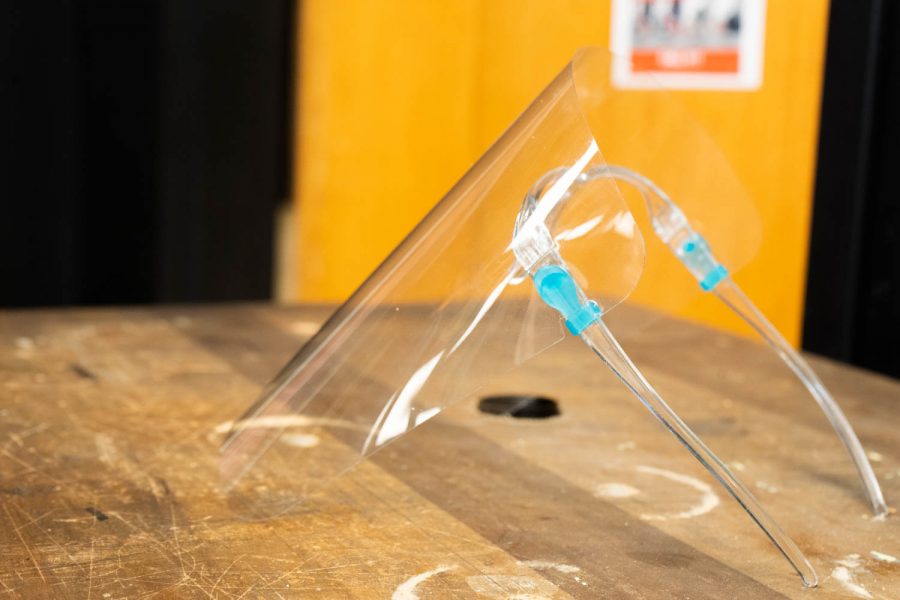Face Shields: Are You Really Protected?
A popular alternative to cloth face masks is less effective in protecting against the transmission of the novel coronavirus.
October 23, 2020
It’s a common scene at NASH and throughout America’s schooling system. Face coverings are now the norm, and not by student or teacher choice. School districts have mandated the health measure.
While most have opted for a traditional cloth mask, a popular alternative is the plastic face shield, consisting of a piece of plastic connected to a headband and extending down the face, just below the chin. However, experts have questioned the effectiveness of such facial coverings as safe alternatives to cloth facial masks.
The CDC strongly recommends the usage of masks when in large gatherings, especially when it is difficult to follow social distancing guidelines. The CDC also recognizes and addresses adaptations for masks for those with health-related issues, such as respiratory ailments. But as of now, the CDC does not recommend the usage of a plastic face shield as a substitute for a mask.
Face shields are primarily used as eye protection devices, and it is currently uncertain how well they protect people from the spray of respiratory droplets. There is currently not enough evidence and research to support or deny the effectiveness of face shields; therefore, the CDC does not recommend or promote the usage of face shields in public places. When wearing a face shield, the droplets that are released when someone coughs or sneezes can escape through the sides or bottom of the shield, which remain open. Research conducted on the coronavirus has shown that the virus usually is spread via large droplets from your nose or mouth, which cloth face masks absorb while plastic shields do not. Wearing only a face shield can increase the likelihood of spreading the virus and other germs from one person to another.
Although face shields are not recommended by the CDC, there are alternative methods associated with face shields that are safer for those who have medical issues and cannot wear a cloth face mask. The CDC recommends wearing hooded face shields or face shields that wrap around the face and chin, as well as frequent sanitation and cleaning of the face shields.
The usage of face shields in a learning environment, such as school buildings, is somewhat understandable, however. Teaching and participating in class for hours on end can become uncomfortable from behind a face mask. Using a shield, at a safe distance from students, allows teachers more flexibility and ease while teaching. Clear face shields also allow students to be able to see the teacher’s lips and mouth movements while talking, which can help aid both hearing impaired students and younger students in speech and language comprehension. Face shields can also benefit older students in foreign language classes, helping them learn to pronounce new, unfamiliar vocabulary.
Nevertheless, for most people, cloth face masks are much safer and more effective to use than plastic face shields. They are much better at absorbing respiratory droplets than the plastic face shields and are recommended by the CDC for public usage.













Sharon Smith • Oct 23, 2020 at 2:11 pm
Great article!